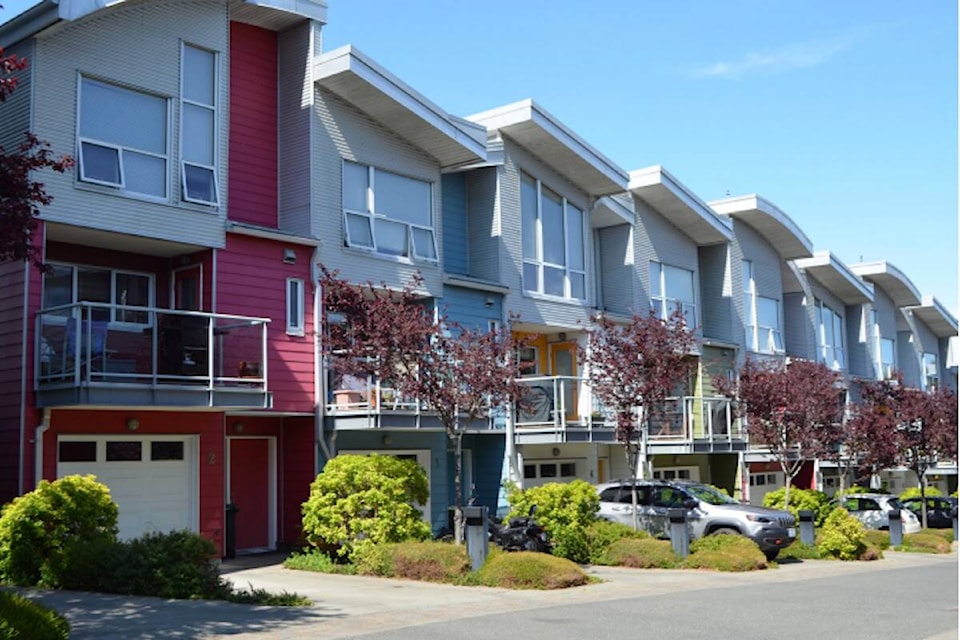When Victoria holds a public hearing for its missing middle strategy on Aug. 2, it’ll be backdropped by the city falling behind on building enough family-sized homes for residents now and in the future.
That was a key finding council heard on July 29 when it received the annual housing strategy review.
Of all residential permits issued in 2021, just two per cent were for missing middle options – ground-oriented buildings that fall in between single-family dwellings and higher-density apartments. The city initiative looks to boost supply and housing diversity by allowing builds like townhomes and houseplexes on lots that only permit a standalone home.
Lacking homes for families was one of the only areas where Victoria was off track in its strategy. The city issued 34 missing middle building permits in 2021, well short of the 150 target. Council also only paved the way for 142 family-friendly homes (two or more bedrooms), which was below the annual goal and was down 217 from 2020.
“Targets associated with the goal of offering more housing choice are seeing the poorest performance among all indicators,” said Julie Edney, a housing planner with the city.
The lack of availability of family homes comes as updated census data found that Victoria is aging, with the 65 and over age group growing faster than any other cohort.
The last area where the city lagged behind its 2025 targets was in the number of units approved for low and median-income earners.
The review does tout some progress towards the 2025 targets. Victoria set a record in 2021 by issuing building permits for 1,473 net new homes. That included the city exceeding its yearly goals for approving market rentals, condos and non-market spaces.
“No one housing strategy action is able to address the many challenges faced by Victoria’s diverse residents, however, each action seeks to address an existing gap or unmet need along the housing continuum,” Edney said.
But the planner noted affordability remained tenuous across all housing types. The cost of all housing types increased by double-digit percentages from 2020, with the highest jumps being units in existing multi-family homes (up 22 per cent.) Those types are clearly in demand as Greater Victoria set a record with $862 million in sales for multifamily properties (2,700 overall units).
The city data shows rising rental prices likely outpaced tenants’ income increases over the past five years. Households currently need to make a combined $65,000 to afford the average rental.
But even if residents can afford that, vacancy rates have reduced to pre-pandemic levels and currently sit at one per cent. Average rents for vacant units were 24 to 39 per cent higher than occupied units, which Edney said shows how difficult it is to transition between rentals in the city.
READ: Victoria cements Aug. 4 public hearing for missing middle proposal
jake.romphf@blackpress.ca. Follow us on Instagram. Like us on Facebook and follow us on Twitter.



